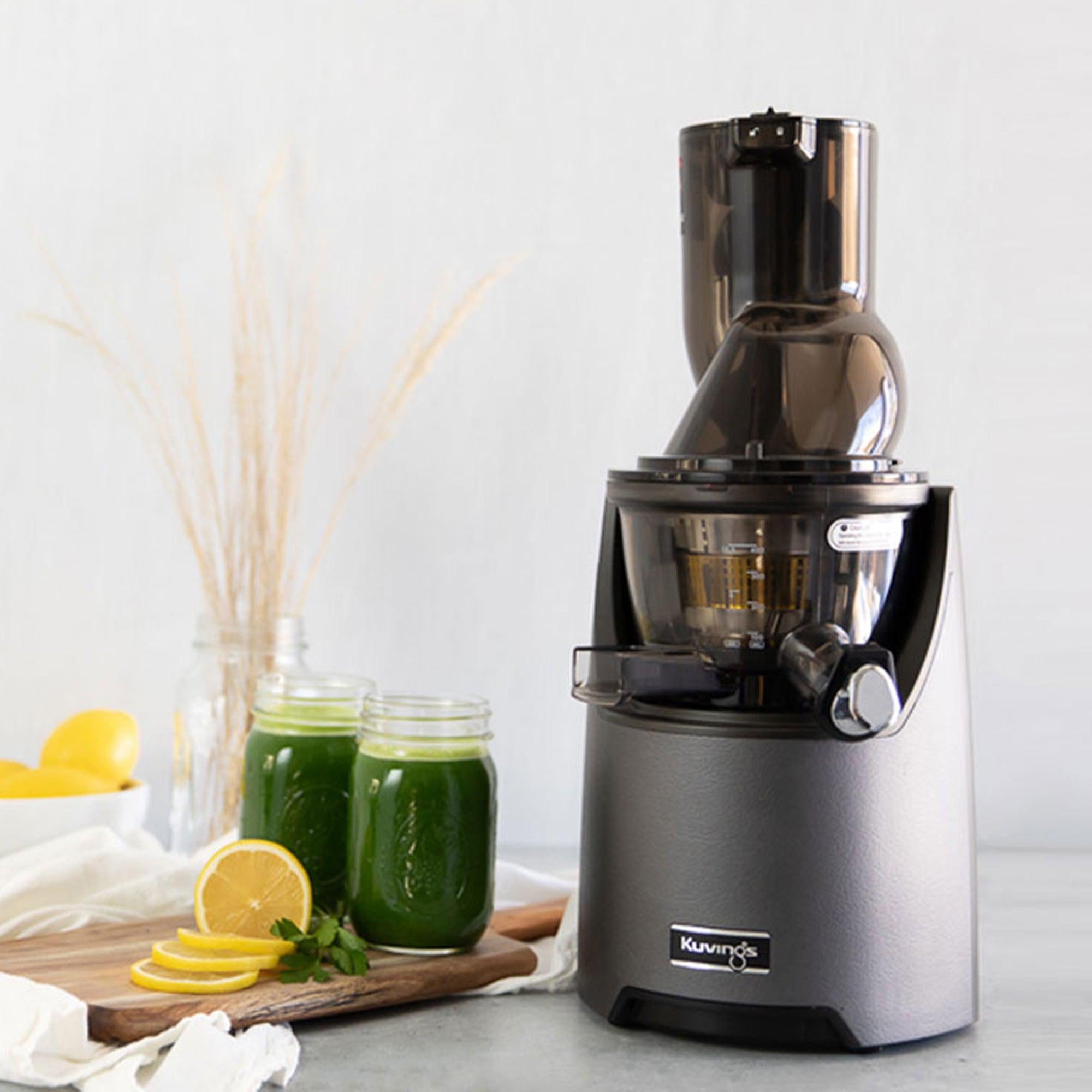1. Choosing the Perfect Pineapple
Knowing which pineapple is the best when buying one in the store can be difficult. We narrowed down the top 5 qualities to look for in the perfect pineapple for juicing!
What to look for
A pineapple with the following traits is optimal for effortless juicing and sweet taste.
-
It’s yellow with hints of green.
-
It feels not too firm but not too soft.
-
It has some weight to it, indicating that it’s juicy.
-
It smells sweet on the bottom.
-
It has vibrant green leaves that pluck off easily.
What to avoid
-
Green pineapples: While they feel firm, they won’t taste sweet because they’re not ripe yet.
-
Super yellow pineapples: While ideal for eating, they have soft pulp, which could lead to clogging.
-
Dull yellow/brown pineapples: This type of pineapple is overripe. It has a sour/fermented smell, and its pulp is too soft for juicing, which could lead to clogging.
2. How to Prep Pineapple
The key to juicing fibrous ingredients like pineapple is knowing which direction the fibers run. Cutting in the opposite direction of the fibers breaks them and prevents clogging.
-
Cut the leaves and bottom off.
-
Remove the peel.
-
With the pineapple on its base, slice it into ¼ to ½ inch slices. This breaks up the horizontal fibers.
-
Lay the core flat and slice it into cubes. This breaks up the core’s vertical fibers.
3. How to Insert Pineapple
Juicing pineapple with hard ingredients is ideal. Hard ingredients help push the pineapple’s soft pulp through the juicer. If you’re juicing pineapple on its own, read the directions below based on your type of juicer.
AUTO10
Place pineapple slices at the bottom of the hopper and core pieces on top. Juicing the core at the end of the session pushes out the remaining pulp inside the juicer.
REVO830
The key with a manual feed juicer is to feed it slowly. Insert one pineapple slice at a time and wait for the pulp to stop moving before inserting another. Insert core cubes at the end or alternate with pineapple slices if necessary.
4. Cleaning Your Juicer
Fibers get stuck easily in the strainer’s holes. Therefore, clean your strainer immediately and thoroughly after use.
We recommend using the included cleaning tools to help remove pulp residue! Find in-depth cleaning information here.
Can I juice pineapple peels?
Yes, Kuvings juicers can process pineapple peels. You can prep it as detailed above expect with the peel on and be sure to clean it beforehand.
If you don't want to thoroughly clean the peel of bacteria and dirt before juicing, making pineapple peel tea is an alternative, zero-waste use for pineapple peel.
What do I do with pineapple juice pulp?
Pineapple’s natural sweetness makes it perfect for healthy desserts!
This pineapple upside-down cake is moist and free of refined sugar. Bonus: you can also use leftover carrot pulp in this recipe.
For more tips and recipe inspiration, follow @kuvingsusa on Facebook and Instagram.
Still need help? Contact customer support at support@kuvingsusa.com.

















